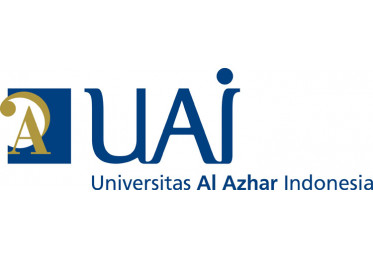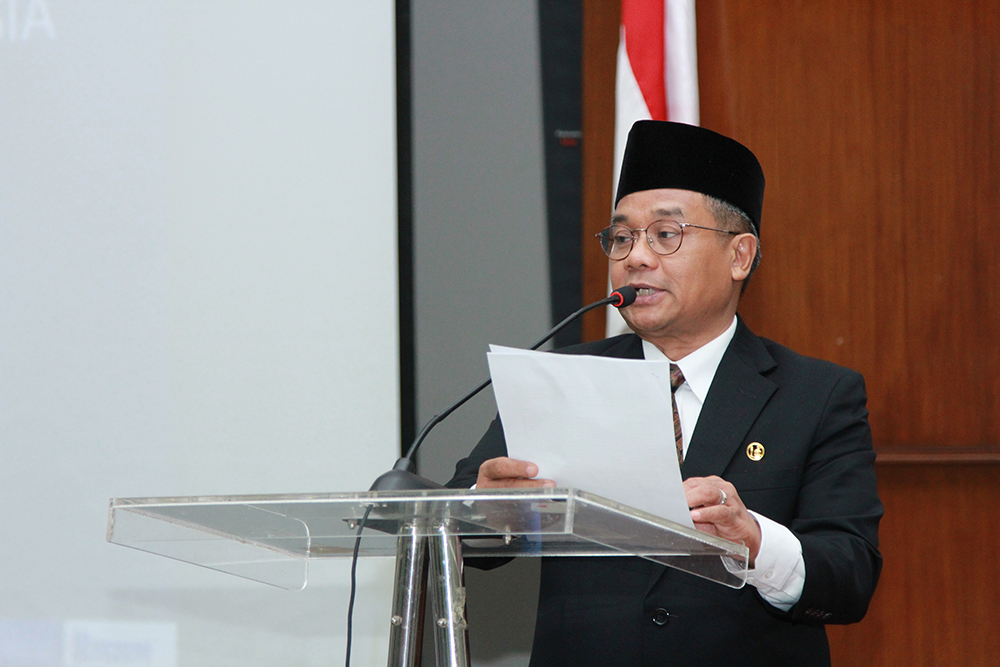The university is a place to improve one’s competence in the form of soft competence or hard competence. It is not just a place for course or training. Naturally, many people believe that universities can provide the necessary supplies for one’s future. This trust should be held by lecturers, educational staff, and leaders of university units. That is, they should not underestimate the students who are undergoing education at the university. This is a great message that must be sincerely undertaken for a better future of Indonesia.
As a logical consequence of the desire to give the best to students, we need the total handling in running the university wheels with a mixture of professionalism, humanity, kinship, education, training and cadre. All this should be understood and run by lecturers, employees, and holders of university-level structural units to the smallest unit in the study programs. All of that can be a component of the university ecosystem that directly and indirectly influenced the students. To fill the university’s educational ecosystem, at least it must be approached through culture, structures, procedures, and tools. These four elements must complement each other like integrated and holistic system components. Culture tend to be the soft component, and as for structures, procedures, and tools are the hard components.
Because of its nature, a relatively soft-kind culture is quite difficult to run and measured its success through quantitative measures. However, culture is very important and can inspire and embody the hard components. In addition, when a cultural approach has succeeded in penetrating into the individual soul, it will be a long-lasting behavior to settle or it could even be forever. Therefore, introduction through culture is very important in university education. It cannot be considered easy, and should not be taken lightly.
Usually the lecturers and employees are less aware of the components of culture, even often overlooked. So the relationship of lecturers with students tend to be more professional, or even transactional. The process is too shaped for reward and punishment, “whips” and gifts. This approach does not benefit the students in the process of character building. In fact, cultural approach must be implied to shape a though soul, purpose ownership, and passion in so many activities and work. As for derivatives there is a reward that is part of the logical impact alone, but not to be the main purpose.
A transactional approach is difficult to ensure that a person can survive long and focus on running his/her idea into reality. This behavior is in fact very necessary in entrepreneurship. If the university intends to build entrepreneur candidates, then the cultural approach becomes the key to success. Because the properties of entrepreneurship are more soft-competence than hard-competence. Soft-competence is what will encourage someone to master the science, technology, and skills to live his life. In other words, soft-competence stimulates students to master hard-competence. In addition, soft-competence can beautify hard-competence. That’s the difference between a course place and a university, where the courses are more weighted on hard-competence.
It is this cultural approach that can motivate students to work hard, be creative, imaginative, think far ahead, and innovative. To that end, the university should supervise the growing research culture and students’ entrepreneurship. Lecturers and unit leaders work so the research and student entrepreneur habits can grow and develop. For example, by inviting them to discuss research ideas and not easily turn down any ideas that come from students. Then, this idea does not stop in the aspect of research, but how the continuation of efforts so that it can be applied into a solution. Many of the issues that today require creative solutions that need to be discussed. Another examples are in energy, food, animal food, transportation, traffic, natural resources optimization, and more. All that requires a soft approach (culture) besides the curriculum in higher education. Discussing these issues is hardly left entirely to the curriculum. Especially when the lecturer-student relationship is too based on transactional, contractual, or professional patterns.
Actually, the aspects of structure, procedures, and tools are relatively easy. However, it is frequent that some universities that have these three components are just for documentary, especially in the aspect of the procedure. If the procedure is merely a formality, then the organisation process runs “business as usual”, not systematic, and not measurable. If it is just a way, the it could. However, it will happen inefficiency, not fast, not right, or even unprofitable.
A university which culture is weak, but want to be good and professional, will generally beautify the structure, procedures, and tools. So, usually the structure is good. Document procedures are available, as well as equipment facilities are pretty decent. It’s often that the university aims to get the ISO certificate. This is important, but not enough. It is necessary but not sufficient. In addition, without understanding the essence of the university’s culture, management certification is often just to display. If the regular culture is not there, then the ISO certificate is just a display to raise the class only. As citizens of smart people, it is not difficult for the campus to obtain ISO certificate. They can be prepared in various ways, such as training, workshops, comparative studies, and the preparation of procedural documents. However, without awareness of the importance of the culture described in the form of everyday activities, the ISO certainly only runs for a while. Then lecturers and employees return to business as usual. Only to recklessly progress. Indeed there are several tools and procedures that must exist to run the culture. For example, for energy-saving cultures, in addition to the call to not often use the elevator, need procedures, technology, and tools operations. For example, staffs must use the ladder when they want to go only one floor above or below. As for the tool, the elevator will not stop when someone goes up just for one floor. This technology is not something that is difficult. Now the effort for implementation is required. Many other cases united the culture, structure, procedures, and tools. In the process of education, students as element of the academic community can be involved in the effort to integrate the four components in the university organisation. So the spirit of cooperation, efficiency, effectiveness, cleanness, organisation, thrifty, and disciplinary habits are awakened as long as they are in the campus area. In terms of learning structures, procedures, and tools, they can learn to apply them in student organisation. Of course in the early stages they must realise and master the philosophy (essence, meaning) of the organisation. Questions around why, what, and how the organisation should be commonly discussed. Without mastery of those essences, they will be trapped in only technical procedures that are mechanistic, technical, meaningful, and has no fundamental values. For this they too must keep learning. There is also the role of lecturers, so that the students do not study too long. These soft-competence behaviours can certainly be applied while strengthening hard-competence. That is the university, not just a place of science transfer without the power of character. That is, without the power of culture, then the university will only be a place of courses and training. This is not good for students’ character-making. In this case the campuses in Indonesia are often left behind compared to the campus in developed countries. We must be aware of it, in order to fix it.
Insha Allah we can.
– Prof. Dr. Ir. Asep Saefuddin, M.Sc.
(Rector of Universitas Al Azhar Indonesia/Professor of Statistics in FMIPA IPB)
See the original Bahasa version here.
(Translated by Dhea Fadhilah)

